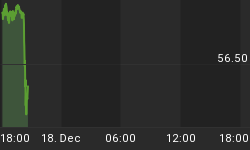11/17/2010 9:09:02 AM
The market increased the intensity to the downside with down volume running 10X up volume...
Recommendation:
Take no action.
Daily Trend Indications:

- Positions indicated as Green are Long positions and those indicated as Red are short positions.
- The State of the Market is used to determine how you should trade. A trending market can ignore support and resistance levels and maintain its direction longer than most traders think it will.
- The BIAS is used to determine how aggressive or defensive you should be with a position. If the BIAS is Bullish but the market is in a Trading state, you might enter a short trade to take advantage of a reversal off of resistance. The BIAS tells you to exit that trade on "weaker" signals than you might otherwise trade on as the market is predisposed to move in the direction of BIAS.
- At Risk is generally neutral represented by "-". When it is "Bullish" or "Bearish" it warns of a potential change in the BIAS.
- The Moving Averages are noted as they are important signposts used by the Chartists community in determining the relative health of the markets.
Current ETF positions are:
In cash.
Daily Trading Action
The major index ETFs opened lower and then moved in opposite directions with the Dow and S&P-500 selling off in the first half hour then rallying for fifteen minutes and the NASDAQ-100 rallied in the first fifteen minutes eased in the next fifteen minutes then joined the Dow and S&P-500 in rising in the next fifteen minutes. None of the major indexes was able to close the morning gap before rolling over to dive the rest of the morning. A rally from noon lasted two hours before the bears once again seized control that would last until the final half hour of trading when they took their foot off of the accelerator after punching through to a new intraday low that saw the major indexes down two percent from Monday's close. The final half hour rally ended with the major indexes down about one and a half percent The Semiconductor Index (SOX 374.07 -5.50) sold off nearly as hard as the major indexes. The Russell-2000 (IWM 70.64 -1.40) sold off nearly two percent. The bank indexes both sold off similar to the major indexes with the Bank Index (KBE 23.11 -0.40) down most of two percent and the Regional Bank Index (KRE 23.19 -0.31) down nearly one and one half percent. The 20+ Yr Bonds (TLT 96.14 +2.33) soared two and a half percent as investors bought into oversold conditions and fled equities in favor of fixed income. NYSE volume was above average with 1.251B shares traded. NASDAQ volume was above average with 2.241B shares traded.
There were six economic reports of interest released:
- PPI (Oct) rose +0.4% versus an expected +0.8% rise
- Core PPI (Oct) fell -0.6% versus an expected +0.1% rise
- Net Long-term TIC Flows (Sep) showed +$81B flowed in from outside the U.S.
- Industrial Production (Oct) was flat (+0.0%) versus an expected +0.35 rise
- Capacity Utilization (Oct) came in at 74.8 versus an expected 74.9
- NAHB Market Housing Index (Nov) came in at 16 as expected
The first five reports were released before the open while the last report came out a half hour after the open. The NAHB report for October was revised downward from 16 to 15.
The U.S. dollar gained another 0.9% on the day following up after it broke through resistance on Monday. The move was fueled by continued fears over a need for a bailout of Ireland and Austria's announcement that they will withhold funds from Greece as they have not reached their austerity targets. This move up in the dollar continues to put pressure on equities.
All ten sectors in the S&P-500 finished lower led by Materials (-2.2%) again and with all sectors losing at least one percent. Retailers announced strong earnings and positive guidance and lost only 0.6% on the day. Part of this was due to Walmart raising guidance.
Implied volatility for the S&P-500 (VIX 22.58 +2.38) rose nearly twelve percent and the implied volatility for the NASDAQ-100 (VXN 23.73 +2.04) rose nine percent.
The yield for the 10-year note was unchanged closing at 2.57. The price of the near term futures contract for a barrel of crude oil fell $2.52 to close at $82.34.
Market internals were negative with decliners leading advancers nearly 6:1 on the NYSE and by nearly 4:1 on the NASDAQ. Down volume led up volume 9:1 on the NYSE and by nearly 10:1 on the NASDAQ. The index put/call ratio rose 0.07 to close at 1.27. The equity put/call ratio rose 0.12 to close at 0.68. The incredible complacency continues even as put/call ratios have risen a small amount as the major indexes sold off hard.
Commentary:
Tuesday's heavy volume trading accompanied by its largest downward move since August suggests there is more downside here. With that said, we are now looking for a bounce in a downtrend and we are currently in cash. The heavy volume seen on Tuesday suggests there is some conviction behind this move so we would look for such a bounce to position short. We will wait to enter a position until we see how trading sets up on Wednesday.
The dollar is the key here. The dollar is currently overbought but in an uptrend state. A move lower will allow equities to bounce. Poor housing numbers and roughly in-line CPI numbers have caused equities futures to pull back before the open.
We hope you have enjoyed this edition of the McMillan portfolio. You may send comments to mark@stockbarometer.com.
















